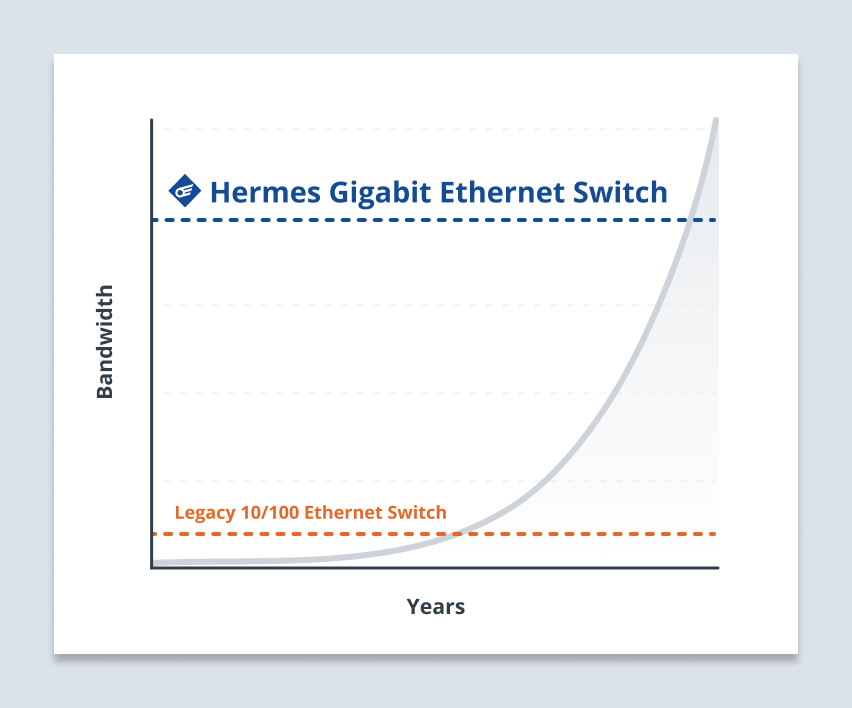Futureproof your substation networks
with IEC 61850-3 Gigabit switches
Engineered for critical energy applications, Hermes Gigabit Ethernet switches deliver unmatched uptime, and reliability to ensure your network runs flawlessly, even in the harshest conditions.
Tough enough for operational settings but with the features IT has long come to expect, its the Ethernet switch IT and OT can agree on.

Gigabit Ethernet

Substation hardened

10 year no-hassle warranty
Give your network headroom
As substations evolve to accommodate smarter grid solutions, their networks must be scalable to handle increased bandwidth demands. A gigabit-capable switch ensures that the infrastructure can support future upgrades, such as the integration of more IEDs, merging units, phasor measurement units (PMUs), and other high-bandwidth devices, without requiring frequent network overhauls

Rugged design and
environmental tolerance
Designed to withstand harsh conditions with high electromagnetic immunity (EMI), zero packet loss, and redundant power for uninterrupted performance.

IEC 61850-3 compliant
Stringent requirements for Ethernet switches and network devices used in substation automation, including high electromagnetic immunity, extreme temperature tolerance, shock and vibration resistance, and reliability to ensure robust, real-time communication in harsh electrical environments.
Zero packet loss
IEC 61850-3 and IEEE 1613 standards define two different device reliability classes:
Class 1 devices, which allow for communication errors.
Hermes 2000—a class 2 ethernet switch—ensures zero packet loss, even during the highest electromagnetic disturbances (EMI).
Dual power inputs
Redundant power supplies ensure continuous operation in case of a power source failure.
Redundant networking and
timing protocols
Ensuring network continuity and precision timing for seamless substation operations
Supports Rapid Spanning Tree Protocol (RSTP) and Media Redundancy Protocol (MRP) for minimal downtime and rapid recovery in case of link or equipment failures, ensuring continuous operation of substation networks, and is transparent to Parallel Redundancy Protocol (PRP) traffic.
Book a 30 minute call with one of our engineers
Click here to schedule a time, or you can fill out this form and someone will get back to you shortly.